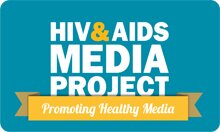2003: Antiretroviral Treatment
South Africa 's controversial AIDS treatment history over the past decade has resulted in considerable media focus and attention.
After years of withholding general antiretroviral treatment in the public health sector, arguing that the drugs were unaffordable and inappropriate, the SA Cabinet announced its approval of the SA National Department of Health's ![]() Operational Plan for Comprehensive HIV and AIDS Care, Management and Treatment for South Africa (1.9MB) in November 2003. The five-year plan provided for ARVs to be made available in the public health sector for the first time on a large scale.
Operational Plan for Comprehensive HIV and AIDS Care, Management and Treatment for South Africa (1.9MB) in November 2003. The five-year plan provided for ARVs to be made available in the public health sector for the first time on a large scale.
The Cabinet ![]() announcement cited "favourable conditions", including falling drug prices and growing experience in fighting HIV/AIDS as reasons for the implementation of the plan at this stage.
announcement cited "favourable conditions", including falling drug prices and growing experience in fighting HIV/AIDS as reasons for the implementation of the plan at this stage.
| Planned number of patients on antiretroviral treatment vs no. of new AIDS patients per year | |||
| Years | ARVs | Total Cases on ARVs (planned) | Projected total new AIDS cases 1 |
| 2003/2004 | 53,000 | 53,000 | 388,701 |
| 2004/2005 | 138,315 | 188,665 | 462,841 |
| 2005/2006 | 215,689 | 381,177 | 530,658 |
| 2006/2007 | 299,516 | 645,740 | 586,181 |
| 2007/2008 | 411,889 | 1,001,534 | 624,720 |
| 1. Data from Table 16.1. Represents new AIDS cases per year and not a culmative total. Source: SA National Department of Health, 2003.  Operational Plan for Comprehensive HIV and AIDS Care, Management and Treatment for South Africa (1.9MB) Operational Plan for Comprehensive HIV and AIDS Care, Management and Treatment for South Africa (1.9MB) |
|||
However, the government was not able to meet its own projections as set out in the table above. By March 2005 about 104,600 people (44,600 public sector; 60,000 private sector) were being treated with ARVs in South Africa, out of a WHO-estimated 837, 000 who needed the treatment (Dec 2004).
Also see: WHO "3 by 5" country profile on treatment scale up in South Africa (June 2005).






